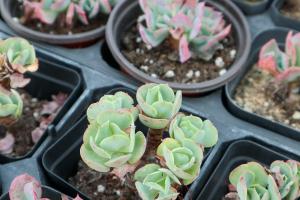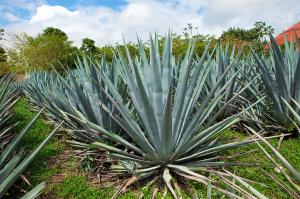How to Winterize Outdoor Plants in Pots
If you live in an area with harsh winters, you may need to take steps to protect your outdoor plants in pots from the cold. Here are some tips for winterizing your plants and helping them survive until spring.
Choose the Right Planters
If you plan on leaving your outdoor plants in pots for the winter, it's important to choose planters that can withstand the cold. Ceramic and terra cotta planters are prone to cracking when exposed to freezing temperatures, so it's better to opt for plastic or metal containers instead. These materials are less likely to break and will help insulate the roots of your plants.
Protect the Roots
Before the first frost, make sure to add a layer of mulch to the soil in your planters. This will help insulate the roots from the cold and prevent them from freezing. You can use shredded leaves, straw, or wood chips for this purpose, but avoid using heavy materials like rocks or gravel that may damage the roots of your plants.
Water Smartly
During the winter months, outdoor plants in pots need less water than they do in the summer. However, you should still make sure to water them regularly to prevent the soil from drying out completely. Check the soil moisture every week or so and add water as needed. Be careful not to overwater, as this can cause root rot and other problems.
Move Your Plants to a Sheltered Location
When temperatures drop below freezing, it's a good idea to move your outdoor plants in pots to a sheltered location. This can be a garage, a covered porch, or even inside your house. Make sure the location is well ventilated and has enough light for your plants to survive. If you have large or heavy pots, use a dolly or cart to move them to avoid injury.
Wrap Your Pots
If you cannot move your plants to a sheltered location, consider wrapping your pots in bubble wrap or burlap. This will help insulate them from the cold and prevent the soil from freezing. Make sure to leave enough space at the top of the pot for air circulation and to prevent moisture buildup.
Prune Your Plants
Before winter sets in, make sure to prune any dead or damaged branches from your outdoor plants in pots. This will help them conserve energy and prepare for the winter months. You can also cut back any long stems or foliage to make it easier to move your plants if necessary.
Conclusion
Winterizing your outdoor plants in pots takes a little effort, but it's worth it to ensure their survival until spring. By choosing the right planters, protecting the roots, watering smartly, moving your plants to a sheltered location, wrapping your pots, and pruning your plants, you can help them thrive even in the coldest of winters. Just remember to check them regularly and provide any additional care they may need.

 how many times do yo...
how many times do yo... how many planted tre...
how many planted tre... how many pine trees ...
how many pine trees ... how many pecan trees...
how many pecan trees... how many plants comp...
how many plants comp... how many plants can ...
how many plants can ... how many plants and ...
how many plants and ... how many pepper plan...
how many pepper plan...
































